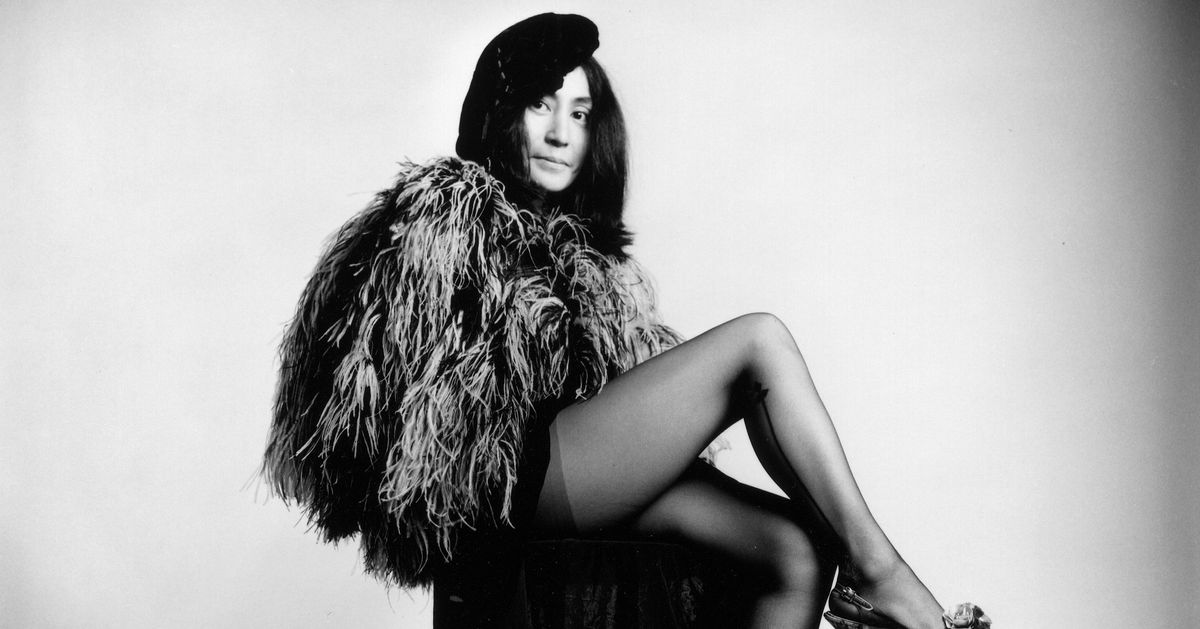Yoko Ono and the Myth That Deserves to Die

Metadata
Highlights
- The homework assignment that most sparked her imagination had been one in which she was asked to translate a bird’s song into musical notation. (View Highlight)
- She felt, as ever, isolated and adrift, but she’d begun exorcising those feelings by writing strange short stories and Zen-like poems. She wrote one called “Secret Piece” that summer: “Decide on one note that you want to play. Play it with the following accompaniment: the woods from 5 a.m. to 8 a.m. in the summer.” She showed her writings to a trusted professor and confessed her lifelong dream of translating birdsong into music. He asked if she’d heard of this guy John Cage. (View Highlight)
- Like that of her contemporaries in the conceptual-art world, Ono’s early work was all about blurring the line between art and everyday life. Every image is a painting; every sound is a song (View Highlight)
- Ono’s early art reminds me of Yves Klein, the impish French artist whose first piece was — in his imagination — to sign his name in the sky. (View Highlight)
- Ono felt alienated by a certain stuffiness and elitism in the scene. “The avant-garde guys … were all just so cool, right?” she recalled years later. “There was also this very asexual kind of atmosphere in the music. And I wanted to throw blood.” (View Highlight)
- I started to see this position of feminine abjectness as a kind of superpower. A position from which a woman could offend far more deeply than a man. (View Highlight)
- I see in Ono a locus of possibility. A portal leading toward an alternate universe in which I can freely admit sacrilegious things (View Highlight)
- Ono encourages other people to stage her pieces. As the film scholar Scott MacDonald writes of her Unfinished Film scripts: “For Ono, the concept of a film is, essentially, the film; once the concept exists, anyone who wants to can produce a version of that concept.” This is one of the aspects of her ’60s work that feel strikingly contemporary — in line with how we think of crowdsourced creativity in the YouTube era. Ono eventually helped Lennon translate this kind of openness into his post-Beatles identity too. Think of that famous motto: “You are the Plastic Ono Band.” (View Highlight)
title: “Yoko Ono and the Myth That Deserves to Die”
author: “Lindsay Zoladz”
url: ”https://www.vulture.com/2015/05/yoko-ono-one-woman-show.html”
date: 2023-12-19
source: reader
tags: media/articles
Yoko Ono and the Myth That Deserves to Die

Metadata
Highlights
- The homework assignment that most sparked her imagination had been one in which she was asked to translate a bird’s song into musical notation. (View Highlight)
- She felt, as ever, isolated and adrift, but she’d begun exorcising those feelings by writing strange short stories and Zen-like poems. She wrote one called “Secret Piece” that summer: “Decide on one note that you want to play. Play it with the following accompaniment: the woods from 5 a.m. to 8 a.m. in the summer.” She showed her writings to a trusted professor and confessed her lifelong dream of translating birdsong into music. He asked if she’d heard of this guy John Cage. (View Highlight)
- Like that of her contemporaries in the conceptual-art world, Ono’s early work was all about blurring the line between art and everyday life. Every image is a painting; every sound is a song (View Highlight)
- Ono’s early art reminds me of Yves Klein, the impish French artist whose first piece was — in his imagination — to sign his name in the sky. (View Highlight)
- Ono felt alienated by a certain stuffiness and elitism in the scene. “The avant-garde guys … were all just so cool, right?” she recalled years later. “There was also this very asexual kind of atmosphere in the music. And I wanted to throw blood.” (View Highlight)
- I started to see this position of feminine abjectness as a kind of superpower. A position from which a woman could offend far more deeply than a man. (View Highlight)
- I see in Ono a locus of possibility. A portal leading toward an alternate universe in which I can freely admit sacrilegious things (View Highlight)
- Ono encourages other people to stage her pieces. As the film scholar Scott MacDonald writes of her Unfinished Film scripts: “For Ono, the concept of a film is, essentially, the film; once the concept exists, anyone who wants to can produce a version of that concept.” This is one of the aspects of her ’60s work that feel strikingly contemporary — in line with how we think of crowdsourced creativity in the YouTube era. Ono eventually helped Lennon translate this kind of openness into his post-Beatles identity too. Think of that famous motto: “You are the Plastic Ono Band.” (View Highlight)

